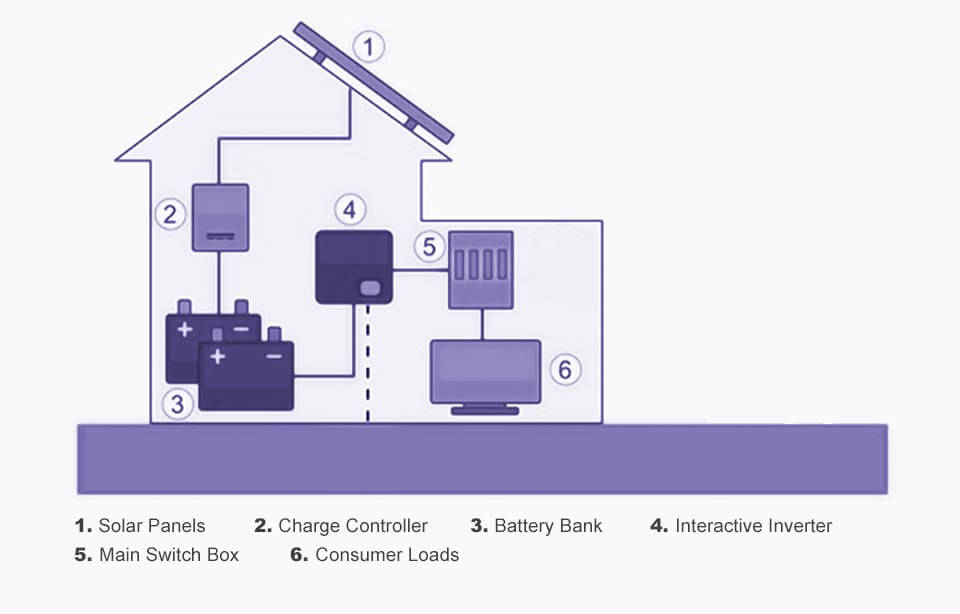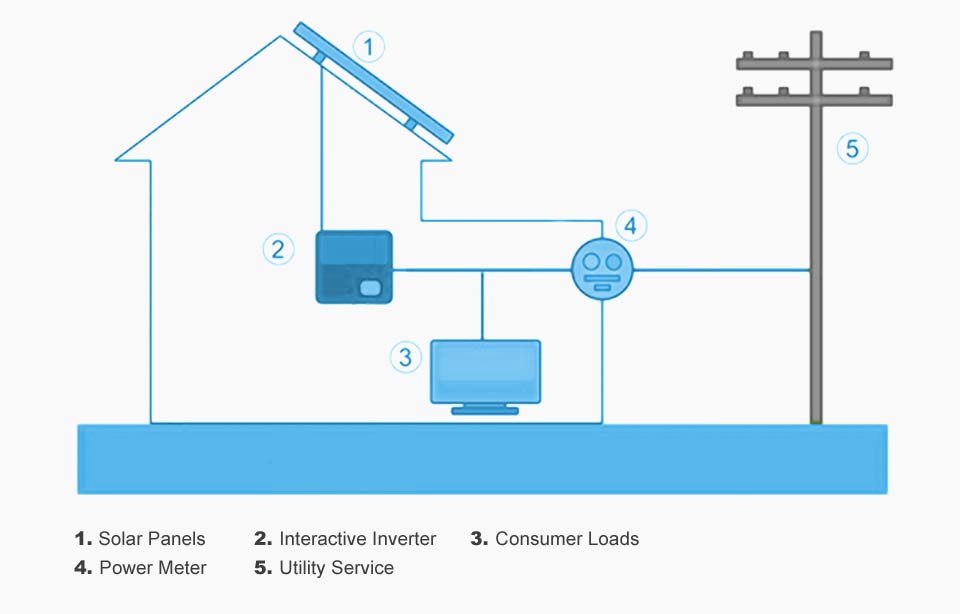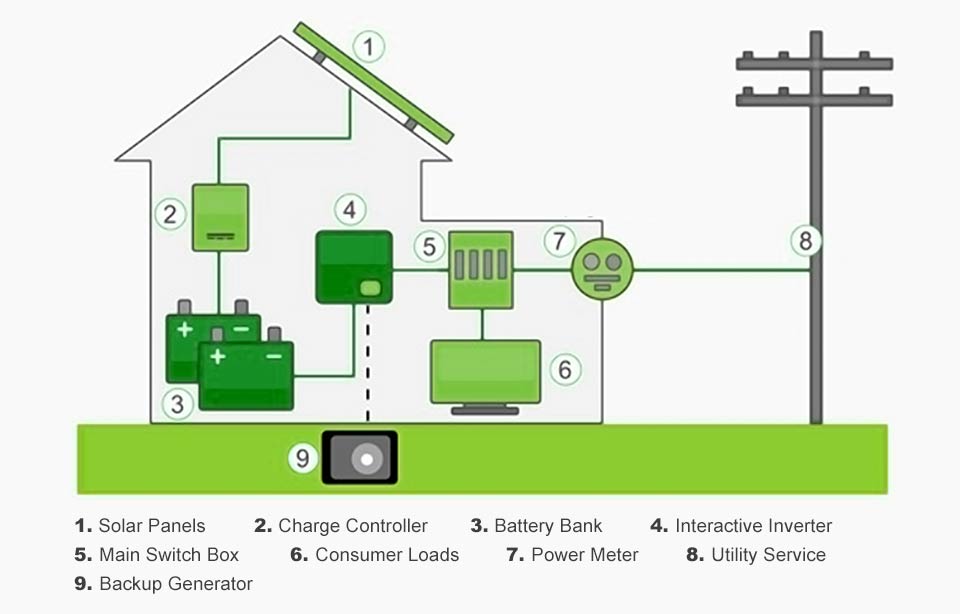Neulite Solar Power Plant-Types
Solar Power Plants can be configured based on mode-of-operation. We provide:
- Offgrid Solar Power Plant
- Ongrid Grid-Tied Solar Power Plant
- Ongrid Grid-Interactive Solar Power Plant
Types of Solar Power Plant
Offgrid
The system comprises of Solar Hybrid PCU (Power Conditioning Unit), Battery Bank, array of Solar PV Modules, Module Mounting Structure (MMS), Array Junction Bank (AJB), Lightning and Earthing Protection system. Generated energy from the Solar Power Plant is first consumed by the loads within the premises. (Lights, Fans and other electrical appliances).
If the Solar Power Plant generates excess energy, then the surplus energy will be automatically exported to the batteries for power backup.

OnGrid
In Grid connected Solar Power Plant, the DC solar energy produced by the solar panels is converted to AC by a Solar Hybrid PCU (Power Conditioning Unit). The output of the SPCU is connected to the distribution switch board of the building through bi-directional meter.
Generated energy from the Solar Power Plant is first consumed by the loads within the premises. (Lights, Fans and other electrical appliances).
If the Solar Power Plant generates excess energy, then the surplus energy will be automatically exported to the Grid i.e the regional electricity board's distribution network. (for example CESC in Mysore)
Ongrid can be further classified into Grid Tied and Grid Interactive
Grid Tied

Grid-tied PV systems typically consist of PV modules connected in series to string inverters that convert DC power to AC power, which is then fed directly to the grid. As a building receives this AC energy, it is distributed to appliances and lighting, or other devices where needed. Any energy that exceeds the regular building usage goes back to the grid. In some cases, the utility issues a credit to the next bill. Design criteria for installing a grid-tied system are relatively simple and linear. The energy flow in a grid-tied system is a one-way street and getting electricity back to the grid is usually a cookie-cutter equation. For example, when an installer is sizing a 4 kW PV system, the given array capacity would match with a 4 kW inverter, which feeds into a breaker installed in the main load center.
Grid Interactive

Grid-interactive systems are based on their grid-tied and off-grid counterparts. Like the inverter in grid-tied systems, the inverter in a grid-interactive system can convert solar-generated DC power into AC power that is then fed directly to the grid. In a grid-interactive system, however, the inverter has multiple additional functions to perform. Under normal conditions, the inverter maintains the battery in a state of full charge in preparation for use during power outages. When the grid goes down, the grid-interactive inverter seamlessly steps in to invert DC power from both the solar and battery sources into useable AC power to run selected loads. The system will charge those batteries during the day from the panels or as required from a generator, or both. The grid-interactive inverter can automatically control the generator to run only when required to recharge the batteries, greatly reducing the generator's run time, noise output and fuel consumption.